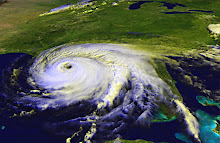Remember, the power is out. The food in the fridge is starting to get warm. Electric stoves, microwave ovens, and electric can openers are useless. Natural gas is usually a little more reliable (as a source for your gas stove and gas water heater), but let's not count on it. You have no running water.
What'll you eat?
This is why it's important to think ahead and have a few extra supplies on hand, especially if your area is prone to disasters during a certain time of year, like Hurricane Season.
Here's what I have in my cupboard right now:
- 5 cans of potted meat
- 5 cans of chunk chicken
- 1 can of Vienna sausages
- 1 Clif Bar
- half a bag of tortilla chips
- half a bag of Baked Lay's
- a partial can of Planter's Mixed Nuts that have been in the pantry for a long time. Do nuts go bad?
- ditto a half a box of Girl Scout Cookies, which are still sealed in their individual portion bag.
We won't starve, but it would get pretty boring after the first couple of meals. Especially if the mayo and other condiments go bad. As we get closer to Hurricane Season, we'll start increasing the variety of non-perishable foods we have on hand.
A SHOPPING LIST
- Ready-to-eat canned fruit or fruit cups. Don't buy the jumbo-sized cans unless you're feeding a very large family or sharing with the whole neighborhood.
- Dried fruits - sometimes shelved in the produce section, sometimes in the baking aisle.
- Nuts - eat alone or make trail mix with nuts and dried fruit. Avoid pre-made trail mixes that are spicy (make you thirstier) or have candy in them (easily melts without air conditioning).
- Compressed food bars or granola bars.
- Whole grain cereals such as oatmeal and low-fat granola. Can be eaten dry if you don't have shelf-stable milk.
- Canned vegetables - I grew up eating green beans straight out of the can. Whole kernel corn and some kinds of beans are often included in cold salads.
- Dried meat products like jerky.
- Canned fish and meat.
- Peanut butter - read labels and look for one that doesn't require refrigeration after opening.
- Whole grain crackers - These are good replacements for bread.
- Shelf stable milk that doesn't require refrigeration - I've seen Parmalat on the shelf at Sam's Club, and Bordon's and Hershey are among the companies that also make shelf stable milk products.
- Fruit juices in single-serve cans, bottles, boxes, or foil packs.
- Electrolyte drinks, such as Smart Water, Gatorade or Powerade.
- Snack-packs of pudding or Jel-lo.
- MREs and Heater Meals - Meals Ready to Eat are used by the armed forces and are typically distributed by the National Guard after a disaster. They include a just-add-water chemical heater for your main course, so you can get a hot meal in minutes without utilities. MREs and the civilian version, referred to as Heater Meals, are available through camping supply stores and internet retailers.
WARNING: Each MRE pack contains enough calories and protein to keep a muscular and physically fit serviceman or woman going for hours as they burn thousands of calories lugging heavy packs and weapons for miles in a war situation. A normal person can make three meals out of one box. Seriously.
I should mention that we have about 15 cans of regular cat food and about a dozen cans of Indy's diabetic cat food, plus a partial bag of their dry food. It's important to plan ahead for your pets, too.
AVOID THE "PANIC SHOP"
You don't have to break the bank and buy $500 worth of food when a disaster is imminent. Make out a three-day menu based on the size of your family and buy a few items every week. Be aware of the expiration dates (canned goods will often last for over a year), and once you're stocked up, just rotate the older items out as part of your regular meals and replace them with new products. This way, you can take advantage of sales and coupons, you're spreading out your cost over time, and you're avoiding the "panic shop." That's when you're maneuvering your cart through crowded aisles, searching increasingly bare shelves and buying everything you can lay your hands on without thought of how it will fit your family's needs.


No comments:
Post a Comment